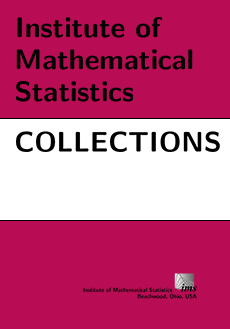Abstract
Let X1, X2, …, Xn, … be a sequence of iid random variables with values in a finite ordered alphabet {α1, …, αm}. Let LIn be the length of the longest increasing subsequence of X1, X2, …, Xn. Properly centered and normalized, the limiting distribution of LIn is expressed as various functionals of m and (m−1)-dimensional Brownian motions. These expressions are then related to similar functionals appearing in queueing theory, allowing us to further describe asymptotic behaviors when, in turn, m grows without bound. The finite alphabet results are then used to treat the countable (infinite) alphabet case.
Information
Digital Object Identifier: 10.1214/09-IMSCOLL513


